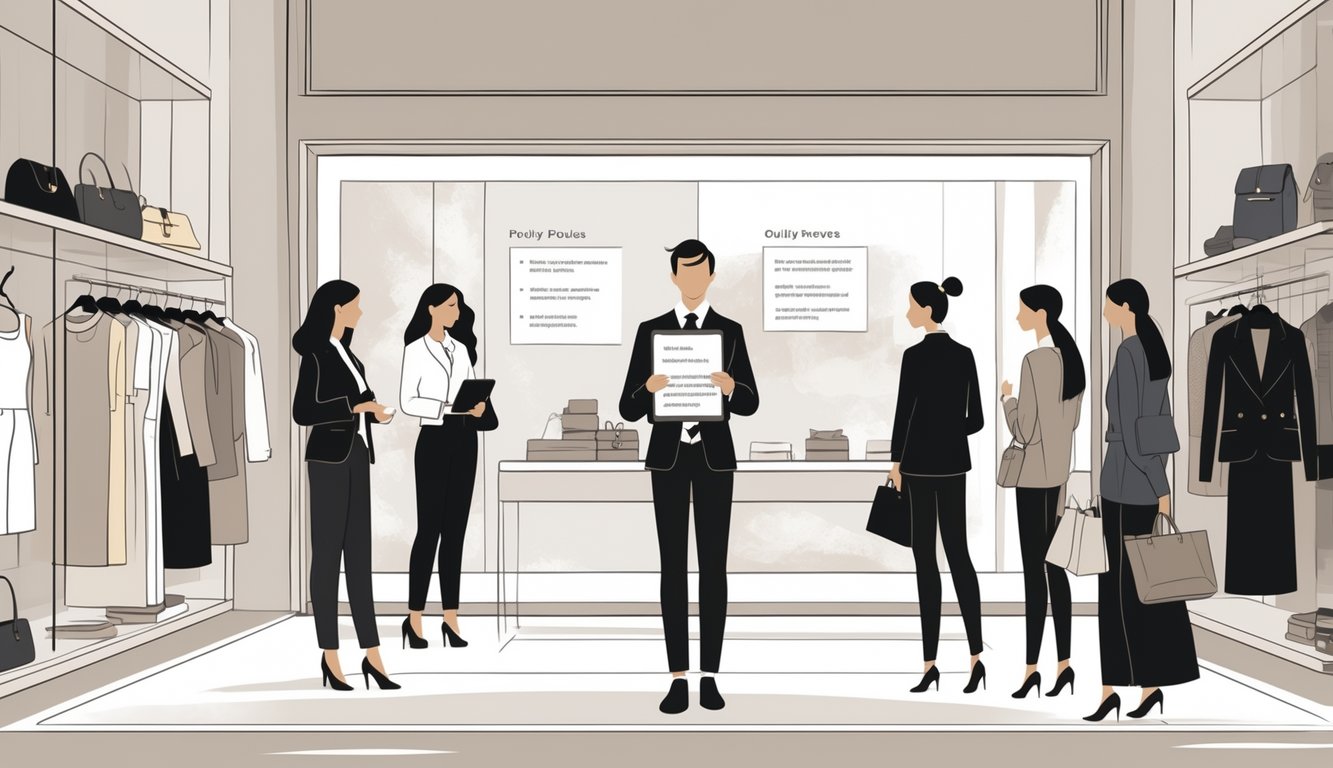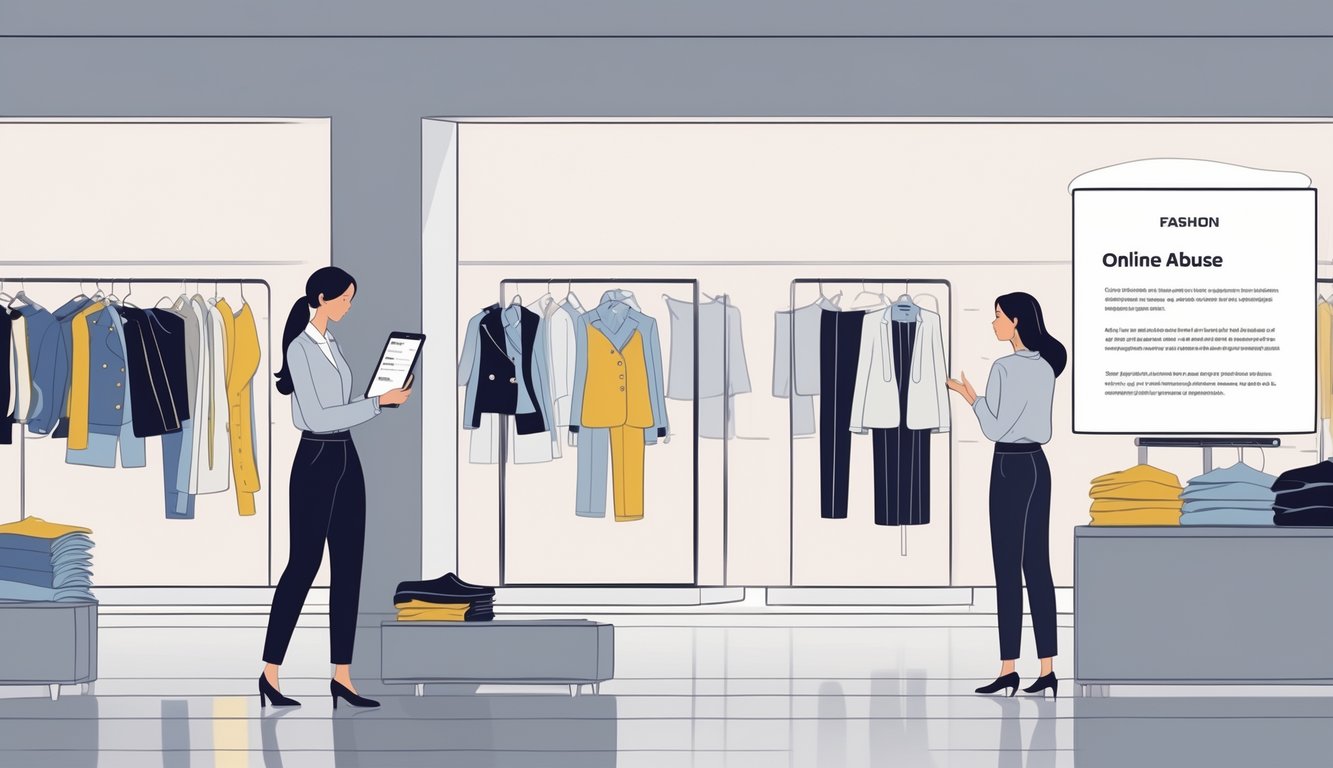
Increased Return Abuse and Wardrobing
Scroll Instagram and there’s always someone “borrowing” a fancy dress for a night, then returning it like nothing happened. Some call it clever, but brands call it “wardrobing.” Stats say 10% of returns aren’t even new—swapped tags, deodorant marks, you name it.
Shep Hyken (he’s big on customer experience) warns that brands get burned by being too nice, but shoppers freak out when rules get stricter (Forbes on changing return policies). Store managers see the cycle—wear, wash, return—while the rest of us just want to be able to send back a shirt that doesn’t fit. Sometimes it feels like a used clothing swap behind the counter, honestly.
Impact of Third-Party Marketplaces
eBay, Poshmark, all those reselling sites—great for cleaning out my closet, but brands hate them. Some people buy in bulk, abuse the return loopholes, and resell. There are even scam artists who send back boxes full of rocks (yep, that happened to me). Now brands demand QR codes, proof-of-purchase, anything to cut down on these headaches.
An insider told me lawsuits and public outrage spike every time a “lifetime return” promise gets axed—remember L.L. Bean in 2018? (transparency and backlash in retail returns) So now, real shoppers have to jump through more hoops. I lose patience by the third step.
Key Fashion Labels Updating Return Guidelines

Why is my inbox full of policy updates? Return rates, plain and simple. Digital receipts, barcode kiosks, brands quietly moving the goalposts. Shein, Temu, Pottery Barn—they’re not just tweaking the rules, they’re rewriting the whole game, and most shoppers don’t even notice.
Shein’s Approach to Returns
Shein? That place is chaos—who needs that many black dresses? Not me. But lately, they’re cracking down on returns like it’s a trend. Free return? Only the first time. After that, the fees start stacking up.
Here’s what changed in 2023: tighter deadlines, tracking labels, only one courier allowed. A supply-chain guy said it’s not even about the money—just the logistics nightmare. “All those $5 tank tops add up,” he said in a webinar. Now, you need the tags and the original poly bag to return anything. Good luck if you have pets or kids. Most people just give up. Maybe that’s the point.
Temu’s Customer Policies
Temu—don’t get me started. Their app nags me about returns, but “free returns” is a joke if half the stuff can’t even go back. Sunglasses, pajamas, sealed anything? Forget it. Analysis says Temu’s return window is 30 days, which feels short compared to the “whenever” vibe elsewhere.
I tried it: three days for a label, five more for an update, and then—surprise!—store credit only if you return a “final sale” item. Consumer forums (yes, I read them) say bulk orders get flagged for “pattern abuse.” There’s no official rulebook, but resellers swear Temu’s algorithms score your returns, and if you trip the wire, they just cut your perks. Would love to see how that works, honestly.
Pottery Barn’s Evolving Strategies
Pottery Barn—yeah, I know, not the first name that screams “return drama,” but wow, things have changed. Returns used to be almost comically easy. Now? Unless you’ve got a manufacturing defect, “custom upholstery” is a one-way street. I heard from someone in their call center (they sounded tired) that management actually watches for high-return profiles. Sometimes they just shut people down. I’ve seen the emails—“exception” here, “exception” there. You get flagged, and suddenly your inbox is full of corporate-speak and weirdly formal warnings.
That ABC News piece on retailers tightening up? They dug up this stat Pottery Barn definitely doesn’t advertise: less than 0.02% of accounts get flagged for “abuse,” but if you’re one of them, good luck. Their FAQ now reads like it was written by someone who’s never actually returned anything with kids screaming in the background—seasonal stuff has, what, a 7-day window? Try making that call while you’re tripping over Legos. And don’t even think about returning monogrammed towels. The rules shift constantly, and unless you’ve got receipts and screenshots, you’re just arguing with a bot.
Techniques Used to Curb Online Return Abuse
Every time I order a blazer, the return sticker gets more threatening. No warning at checkout, just new fees and tiny print. Remember when you could return anything, no questions asked? That’s gone. Now it’s friction everywhere. They basically dare you to try bracketing (ordering three sizes, keeping one) or, let’s be honest, wardrobing. They’re onto us.
Stricter Return Timeframes
Return windows used to be generous—30, even 60 days. Now I’m standing in my hallway, holding a box, thinking, “Wait, when did this even arrive?” They’ve got it down to 14 days, sometimes just 7. Who is that organized? Supposedly 59% of retailers in 2024 already shrank their windows, according to some trade research. “Wear once and return” is only for the hyper-disciplined now.
And get this: policies change depending on who you are. VIPs? They get slack. Serial returners? Their window shrinks. A luxury exec told me—off the record, obviously—that they chop a week off for certain customers if they see “wardrobing” patterns. No one’s recording these things, but it’s happening. The scammers just hop to the next store.
Restocking Fees and Their Effectiveness
Restocking fees—thought those were a myth, honestly. Nope. Suddenly, there’s a $10 fee staring at me at checkout. Doesn’t sound like much until you’re returning three pairs of jeans and a dress you wore to a wedding. It feels like a penalty for just trying things on. According to a 2024 supply chain write-up, these fees scare off casual returns, and I believe it.
You don’t need a spreadsheet to see why. If returning something means losing money, most people just…don’t. Wardrobing gets expensive fast. These fees are blunt and sometimes make loyal shoppers mad, but honestly, the “risk-free” shopping era is just gone. Now every return feels like a gamble.



